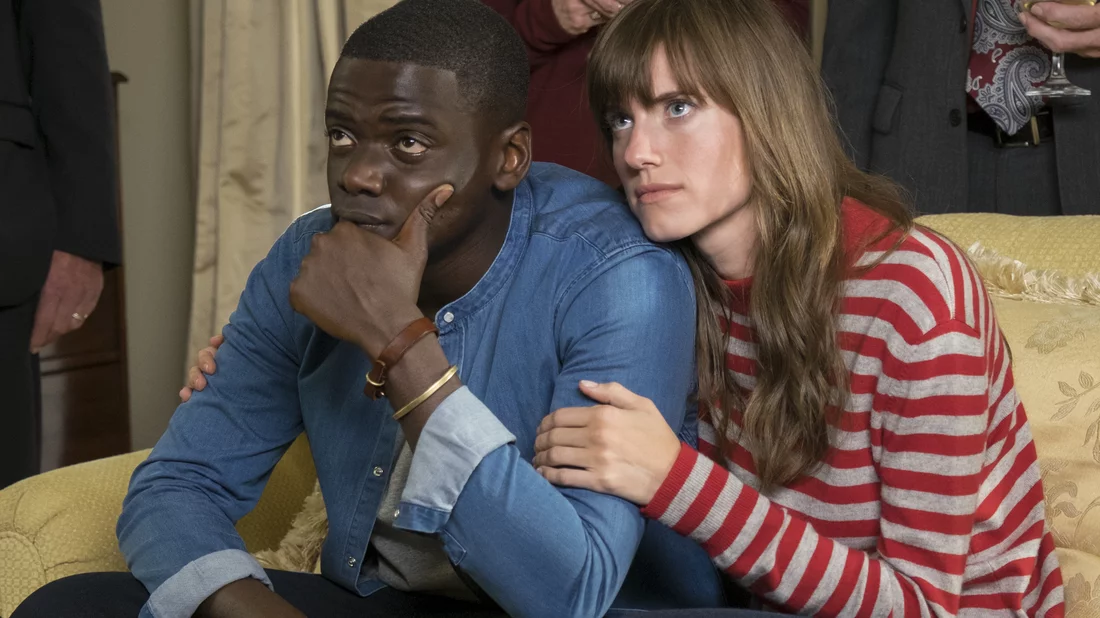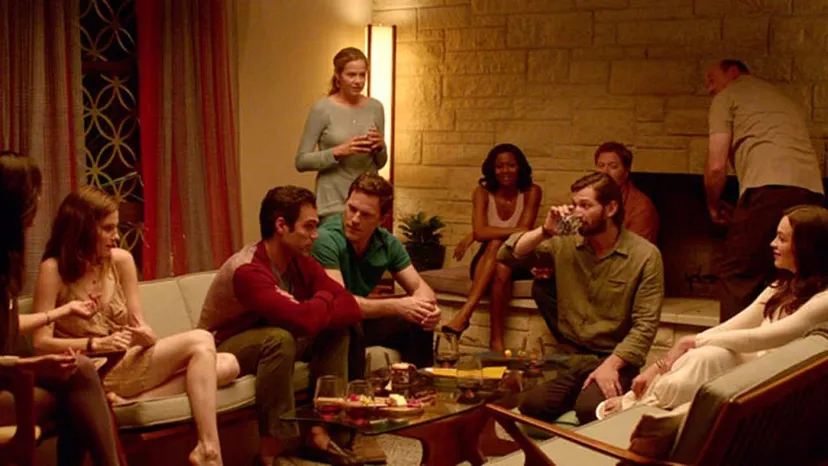By Afroditi A. Karagianni,
Recently, after my monthly binge watch of films, I stumbled twice (!) upon the oddly specific “genre”, where a couple is driving to a remote location for a reunion and unwillingly hurts a wild animal on route, which incident is then used as an omen of bad things to come. Since this occurrence happening more than once is nothing if not rare, reviewing the two films and deciding on which represented their genre best seemed to me was a practice utterly inescapable.
On the one hand, 2017s Get Out, directed by Jordan Peele, was a sensation. The story focuses on Chris and Rose, an interracial couple, who decide to go upstate to visit Rose’s parents for the weekend. While on their way, the couple’s discussion is abruptly interrupted by a deer, which hits their car and loses its life on the spot. Visibly shocked and saddened, they call the police. An evidently racist policeman then arrives, who (unreasonably) demands to see Chris’ driver’s license. Rose defends her boyfriend, as she is the one driving and (by law) inclined to show her license, and they get back on their way. At first, Chris reads her family’s awkward language, overly accommodating behavior and unsettling remarks as their nervous attempts to deal with him being black and their daughter’s “unconventional” relationship. As the weekend progresses, a series of increasingly disturbing discoveries lead him to a truth more alarming, than he could ever fathom.
Get Out’s cinematography is impeccable. The settings of the film were carefully chosen to fit its eerie premise, the actors involved did a phenomenal job and the soundtrack was a brilliant selection. Peele shines, since his directorial abilities allow the story to be told in a natural, yet dynamic, way which keeps the audience constantly on the edge of their seats. Being a thriller that respects itself, the film possesses the typical bloody, gory, violent and disturbing scenes, yet manages to creep out its viewers just as well without them (through the uncomfortable, unsettling and forced smiles Chris is frequently the recipient of, or the long, anxiety inducing frame pauses that are existent in various points in the movie).

Get Out hits all the right notes. It possesses all the horror, mystery and thriller elements one demands to see, while simultaneously being visually gorgeous. However, it being deeply unsettling is not solely achieved through these elements. This film makes an effort to showcase how racism is still deeply rooted in the minds of many and poses as a real, physical threat to various groups. It also notes that racists exist in different shapes and forms, from those who commit micro-aggressions to those who commit violent hate crimes, which is a fact certainly not talked about enough in most societies. Furthermore, it depicts some problems that interracial relationships often face, due to the general public’s racist, irrational, toxic and unsubstantial beliefs. Personally, I would like to see the film commenting on the social issues it amazingly presented further, but it still is a movie that contains many hard-hitting scenes, that often without any words, make extremely powerful statements. Overall, the film was quite amusing, and it undoubtedly had its fair share of critical messages to send.
On the other hand, I found 2015s The invitation, brought to you by Karyn Kusama, a piece brilliantly constructed. The film opens with Will and his new girlfriend Kira, who are invited to dine with friends, at Will’s old house, which is currently occupied by his ex, Eden, and her new partner, David. While driving there, Will and Kira hit a deer. Disturbed, they stop the car, only to discover that the deer is alive and heavily injured. Unfortunately, veterinary help is not an option, and Will decides to commit a mercy kill. They resume their trip, while Will’s distress and irritation governing their dinner plans is evident. Without a doubt, his feelings are totally predictable, as Will and Eden divorced shortly after the accidental death of their son Tie, and he has neither seen her nor his old house since. What begins as a relaxed night among friends, rapidly transforms into a bizarre situation, where truths are revealed, fights break out, and soon enough, the lives of the guests are all under severe danger.
The invitation is visually gorgeous. The house where the story mostly takes place is the perfect location choice and significantly helps set the movie’s tone. More specifically, this comfortable, modern and spacious house comes in visible contrast with the underlying unsettling feelings existent, a reality that makes the audience entirely gripped. Moving on, some great performances take place, and the actors concurrently manage to keep a harmonious balance between thriller, horror and drama. The soundtrack does the trick, and paired with the bloody, adrenaline-inducing final act, succeed in making the film frightening, disturbing and haunting.

I thoroughly enjoyed watching the invitation. Without a doubt, it is at its best when trying to shock, horrify and startle its audience. Throughout its run, one will never feel at ease. There is always anxiety, there is always a feeling that something is wrong, and the atmosphere created is perfectly coupled with the film’s bizarre scenario. Despite this, the film attempts to discuss grief, love and loss, and does a great job showcasing how the unhealthy processing of a loved one’s loss can profoundly, negatively influence a person. At the same time, it indirectly sends viewers the important message that grief can look different on people, and we are all allowed to process feelings and situations in alternate ways, as long as they are healthy and efficient. Truth be told, I found that a couple of scenes were somewhat longer than needed, and that many characters were not properly developed. Nonetheless, the film kept me entertained and intrigued.
If I had not seen these two movies for myself, I could not have guessed that there are (at least) two thrillers that begin their story in this exceedingly unique and similar manner. To me, they are both worth a watch, especially if the concept of (re)watching over-done thriller tropes, such as that of a happy, blissfully unaware family moving into an old, haunted house, seems rather unappealing to one. Although I appreciate both of their hidden messages and creative ideas, when asked about my most preferred one, I find myself leaning towards Get Out’s side, as it encompasses various forceful and symbolic scenes and impressively ties most of its details together. However, I strongly recommend you give (either of) these two a shot, and your watch will certainly not be a dull one.
References




